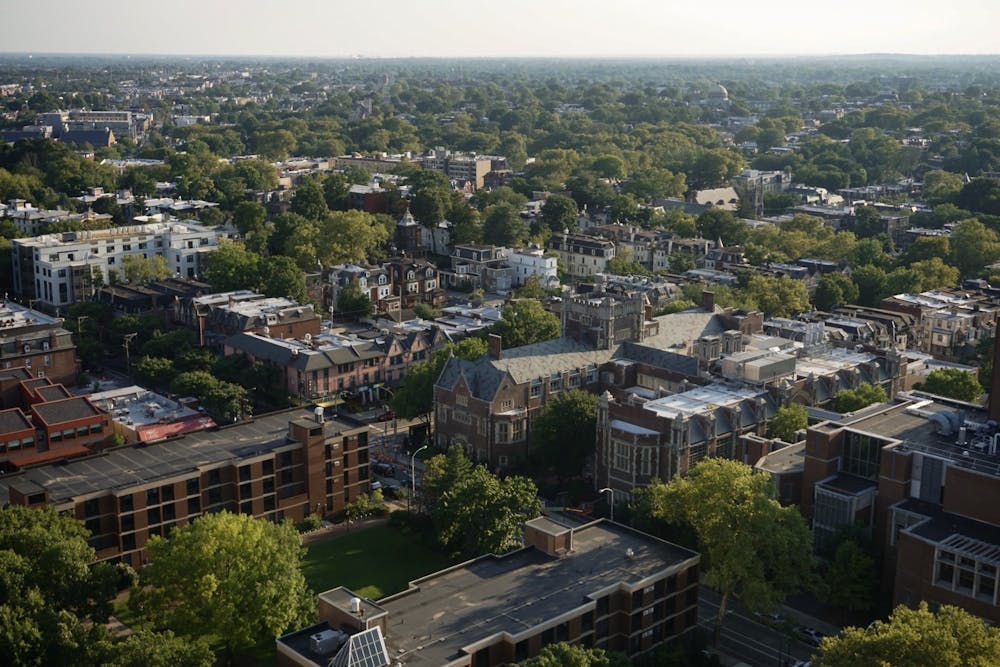Several Penn faculty members recently published a book on the history and current existence of housing discrimination, despite the passage of the Fair Housing Act more than 50 years ago.
The book, titled "Perspectives on Fair Housing," was published as part of the Penn Press series, "The City in the Twenty-First Century." Co-edited by Provost Wendell Pritchett and professors Vincent Reina and Susan Wachter, the volume features chapters written by Penn professors Francesca Ammon, Akira Rodríguez, Rand Quinn, Camille Charles, and Amy Hillier. The Penn Institute for Urban Research presented a six-part livestream series in conjunction with the book’s release in October.
The Fair Housing Act was passed in 1968 to prevent racial discrimination in housing sales and rentals, but research indicates that people of color still face discriminatory housing practices, such as being shown fewer homes and apartments compared to white home seekers.
Pritchett and Ammon opened the volume with a historical perspective of housing discrimination, synthesizing more than 100 years' worth of research on urban planning. Ammon said that this historical context emphasizes the long-standing, systemic nature of the fair housing issue in the United States.
“This isn’t a problem of just today’s poverty or of today’s racial tensions. These are deep-rooted, and so these systems will require a lot of work and a lot of commitment to undo,” Ammon said.
The book highlights that the fair housing issue is multidimensional. The authors analyze fair housing through a number of lenses, including how fair housing impacts education and LGBTQ+ discrimination.
“The book makes quite clear the complexity of actors that need to engage in solving the challenges of housing today,” Ammon said.
In one chapter, Rodríguez and Quinn wrote that discriminatory housing practices enable school segregation along race and class lines.
RELATED:
Urooba Abid | We Must Do More than Vote
Varun Saraswathula | Even though we're off campus, we're still in the "Penn Bubble"
“Desegregating schools, in part, requires the desegregation of neighborhoods," Quinn said.
"The inter-district disparities we see from one school district to the next, that has to do with residential patterns, which themselves are a function of very long-standing histories of racial residential discrimination.”
In collaboration with Massachusetts Institute of Technology professor Justin Steil, Charles wrote a chapter about the continued prevalence of institutional racism in housing. Racial housing inequality is not only historical but ongoing, the co-authors wrote. Charles and Steil expanded on the historical research explained by Ammon to analyze racism in housing from its earliest roots into the present.
“You can get different appraisal values if you have white people in your house and take down your ethnic art,” Charles told Penn Today. “Discrimination is occurring and has always occurred at every step in the process.”
Elaborating on the intersection of social demographics and fair housing, Hillier and MIT’s Devin Michelle Bunten characterized the issue of fair housing through the lens of LGBTQ+ intersectionality.
“Rather than thinking just about the vulnerability of particularly queer and trans people, the term that we used was to ‘queer the question,’” Hillier said. “That means making visible people who are of marginalized gender identity and sexual orientation, but it also means making really explicit and visible issues of power, and also consistent with that intersectionality, thinking about multiple marginalizations, and thinking about housing as broadly as we could.”
As Hillier and Bunten both identify as queer, and because Hillier is the mother of a transgender child, their work for this project was personally meaningful. The question, “what does the world need from me?” formed the basis of Hillier’s motivation for this project.
“As a scholar, as a tenured faculty member and social worker, and me as the mom of a trans kid, the world needed me to write that chapter,” Hillier said.
Reina stressed his hope for the book to be used as a tool against misinformation. Thinking retrospectively, he also noted that he wishes the volume included a chapter that explored fair housing through the lens of public health.
“No matter what your perspective is, fair housing is one of the most important policy issues of our time,” Reina said.
Wachter added that the motivation for this project was the persistent discrimination in housing against marginalized communities. She hopes that the book will “help inform policy and practice for sustainable and equitable cities.”
The co-editors and contributors emphasized the collection of diverse perspectives, which framed fair housing as an issue involving multiple academic disciplines, as a distinguishable feature of the book. Quinn said the book represents the importance of interdisciplinary studies at Penn.
“Some of the most exciting, interesting, provocative scholarship is scholarship that spans sectors or fields or disciplines,” Quinn said. “One of the goals of universities, including Penn, is to span those siloed fields and disciplines, and this book is a great representation of that.”
Correction: A previous version of the article consisted of a photo with a University Enterprises/Herman Realty Group, Inc. sign when, in fact, the real estate agency is not mentioned in the article. The DP regrets this error.









